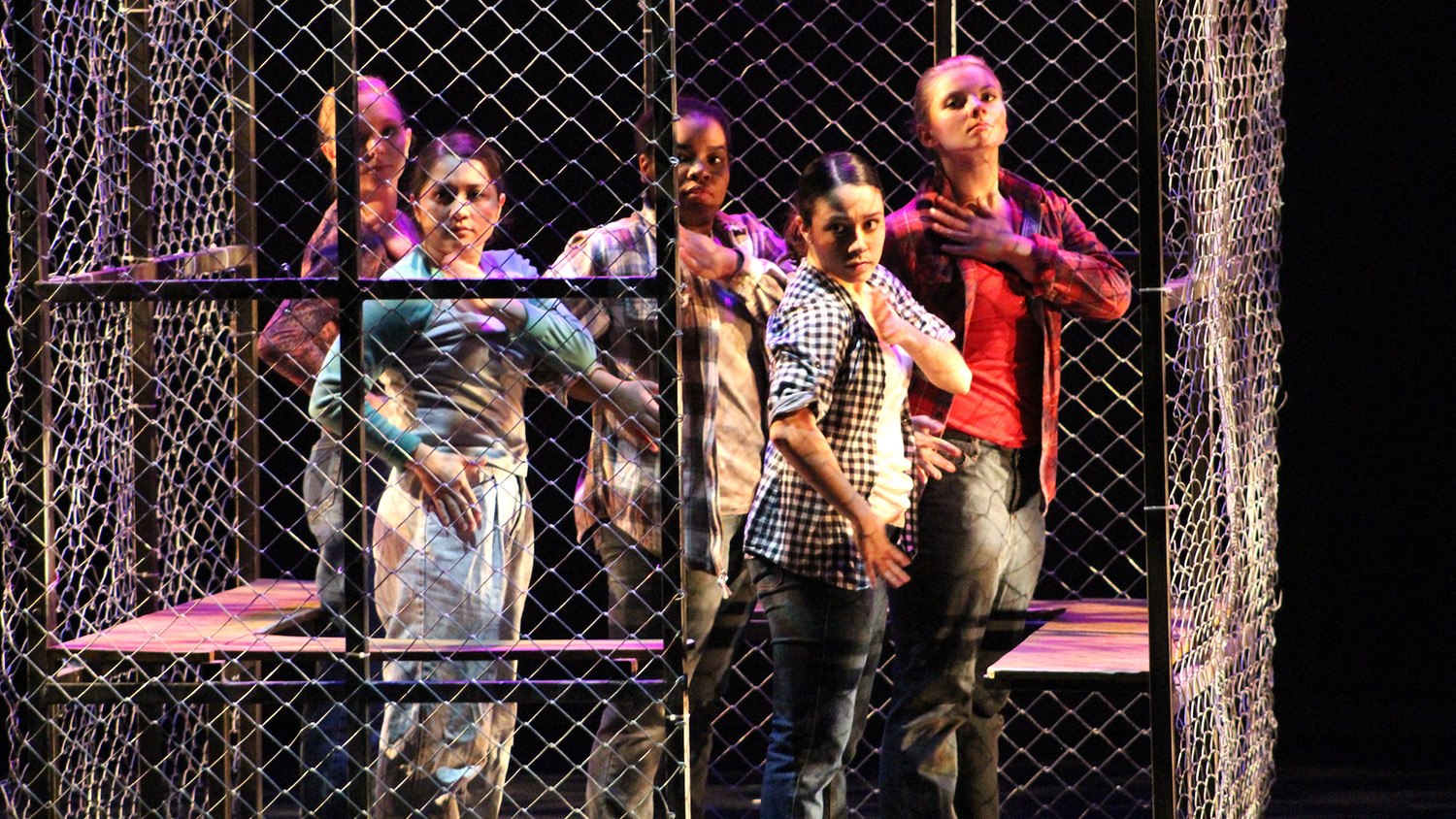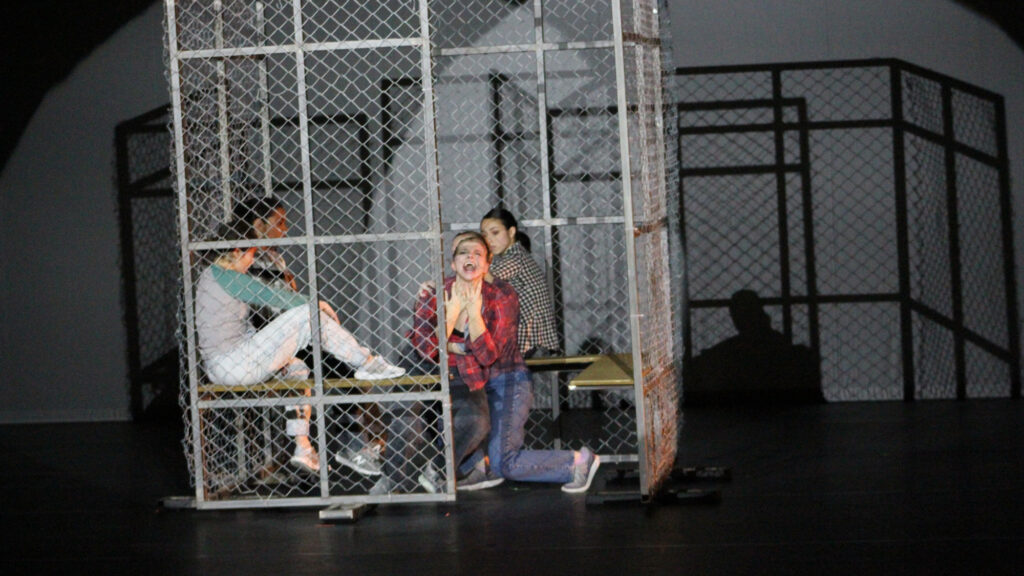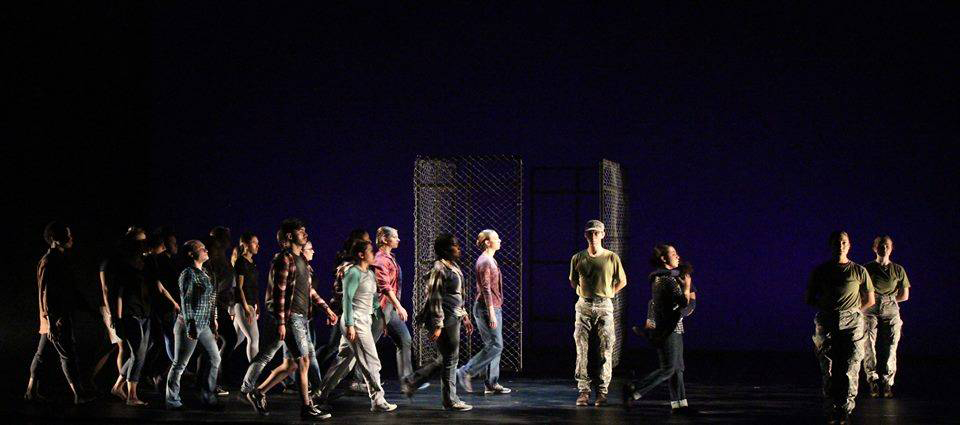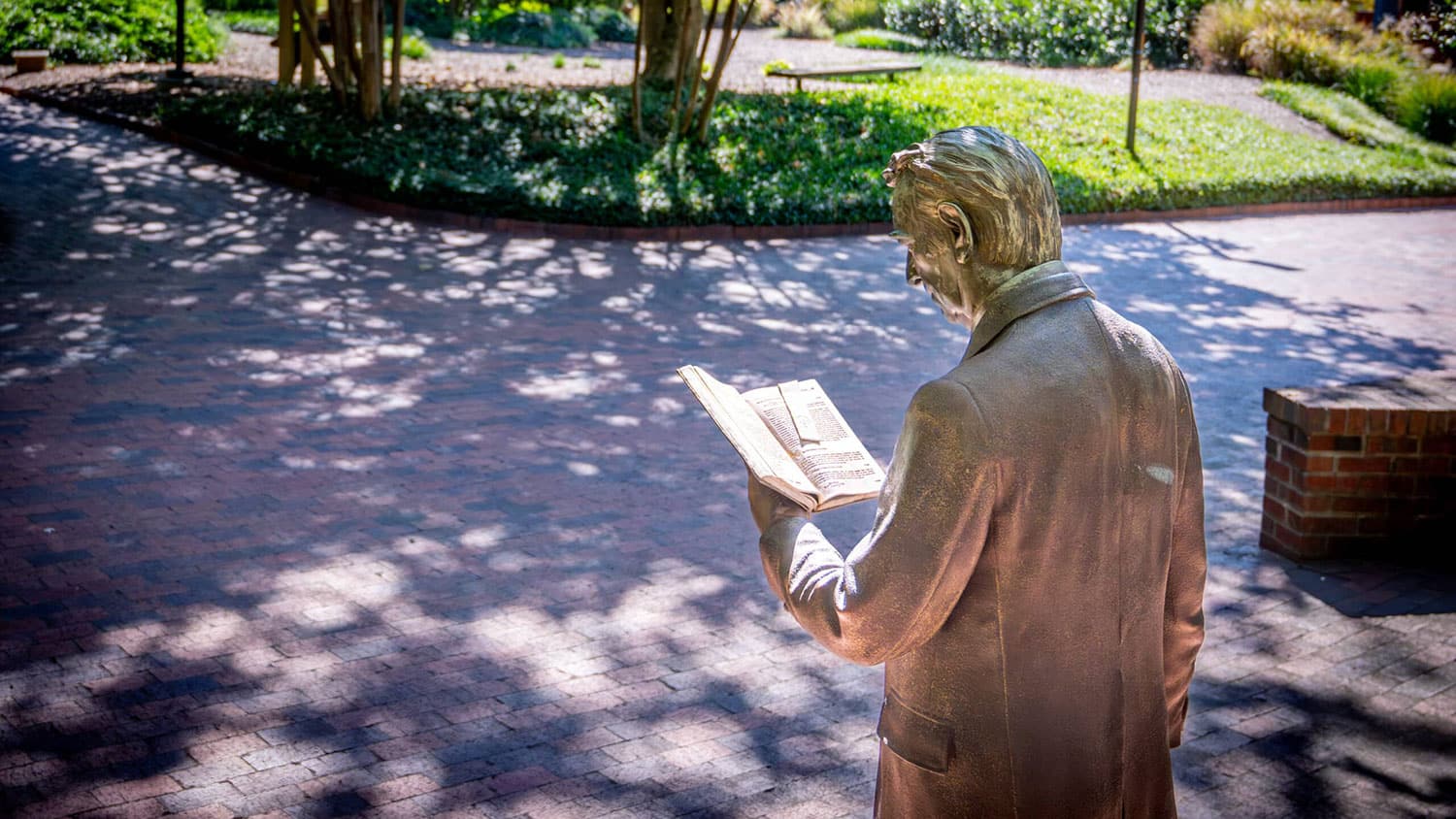‘Posture of the Heart:’ NC State Professor Christa Oliver Sends Message Through Dance

Before arriving at NC State last August, Christa Oliver, an associate teaching professor in the Department of Performing Arts and Technology, spent 11 years teaching in the Dance Division and Musical Theatre Program at Texas State University.
It was there, in 2019, that Oliver created a dance piece called “Posture of the Heart” that continues to resonate with audiences across the country, one depicting the struggle and mistreatment of migrant families at the Texas-Mexico border. Next month, she will remount that piece at the University of Buffalo.
Sending a Message Through Dance
When Oliver was asked to create a piece for Texas State’s Merge Dance Company, she knew she wanted to put together something that would send a message.
At the time, media coverage of the inhumane treatment of migrant families, especially mothers and children, at the border was prevalent. Oliver said an image circulating of a young girl looking up at a border patrol agent and crying disturbed her deeply, especially because her daughter has Mexican ancestry.
Oliver explained that the images at the border of children separated from their parents and placed in holding cells with foil blankets caused her so much emotional pain she was unable to sleep. So she began to move.

“I created the piece and spoke to the students about it,” she said. “They said that represents who we are, and that’s the type of work we want to see on the stage right now. So the piece came about because of what we were experiencing in Texas and the world at the time.”
Posture of the Heart
The piece starts with an image projected on a screen of the wall along the Texas-Mexico border. A dancer then sprints across the stage through moving searchlights, and a woman then walks across the stage carrying a baby.
Border patrol agents separate a woman from her child, along with other women who are then taken to a holding cell. One of the women leads the others to stand up for their human rights. She escapes the cell by climbing over it and reunites with her child among other migrants. In a dance performance, the woman’s child touches her face and then touches a border patrol agent, who has a change of heart and allows them to cross the border into the United States.
With Texas State located in San Marcos, Texas, right along the border with Mexico, many of the students performing in the piece had personal connections to the issues at the border.

“A lot of these stories are real,” Oliver said. “Some of the dancers spoke with people in their community and received their blessing to transform their stories into movement. A lot of their stories went into this piece after I started moving and getting passionate about creating it.”
The Work Continues
In the summer of 2019, Oliver submitted her piece to the Mellon School of Theatre and Performance Research at Harvard. The theme for the school’s summer program that year was migrations, and Oliver was selected to attend the program.
There, she got to meet and learn from scholars, educators and artists from all over the world. During another summer at Harvard with the theme, the State of the Field, Oliver met faculty from the University of Buffalo. After forging those connections, Oliver will remount her piece in February.
That process will include teaching a new group of students the piece and working with set designers and costume designers to build the necessary accessories and sets. However, all that work is worth it to her to continue telling this important story.
“I think that we’ve reached a point where people are demanding change,” Oliver said. “I think that as educators and artists, we want to give our students the tools they need to develop artistic solutions for the challenges we’re facing in the world.”
I think that we’ve reached a point where people are demanding change.
Oliver explained that while there will be new dancers, and new people telling the story, it’s vital that it continues to be told as migrants endure inhumane treatment at the border.
“It’s awful,” Oliver said. “Many things are still continuing. People are still drowning, people are still being separated, people are still being shot by border patrol agents, so it has not stopped. I don’t think it’s going to stop without some real change. So it is important that students continue to tell the story or we as artists continue to tell the story, but especially the next generation.”
And, of course, for Oliver, there’s a personal connection to this story.
Her daughter has Mexican ancestry through her father’s family, and imagining her own daughter made the images she saw hit home for Oliver, and provide the impetus she needed to create such a powerful piece.
“I had a really tough time, because I couldn’t imagine being separated from my daughter,” Oliver said. “I couldn’t imagine her being separated, snatched from me and put into a holding cell as a five-year-old. That messed with me on such a deep level, I couldn’t sleep. So I turned that pain into movement.”
This post was originally published in DASA.
- Categories:


